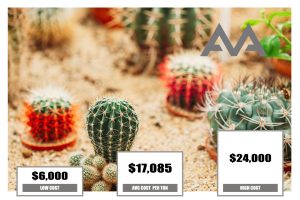What is Xeriscaping?
Xeriscaping or zeroscaping is terminology that was invented by Denver Water in the early eighties. It stems from the Greek preface xero, meaning “dry”. As a result, xeriscaping refers to a kind of low-water landscaping that has few or no plants. The practice is associated with water-conserving landscaping methods, and to drought-resistant landscaping. With more and more area throughout the world encountering droughts, landscapes with a decreased need for irrigation are an interesting road to explore.
Theoretically, a xeriscaped landscape needs little to possibly no water outside the water that the natural environment provides. In drier areas of the western US, like Denver, water is already thought of to be a limited and often costly resource. People are encouraged to restrict the use of drinking water to nourishment instead of irrigation.
The method of xeriscaping has environmental and monetary benefits. It comprises of vegetation that is suitable for the climate and is going to flourish with little additional irrigation, making it drought-resistant. Typically, xeriscaping means replacing current grass lawns with mulch, soil, or rocks, and native plant specimens. These include items such as cacti and flowers such as daffodils. There are also classes of plants that have adapted to dry climates, alleged xerophytes.
Why Xeriscaping is Important!
Adjusting to this sustaining practice not only decreases the amount of water that goes to waste, but it can reduce your water bill. Properties that choose to xeriscape have been seen to save an estimated a hundred and twenty gallons of water a day. With the extra money, you can buy even more xeriscaping items!
Xeriscaping is a perfect way to care for the planet and your community’s general water supply. You can help by water conservation and create a flourishing landscape that is going to never be devoid of aesthetic beauty. It’s the best of the two worlds. You are helping the environment and at the same time creating a visually pleasing and easily maintained landscape!
Fast Key Facts
- This kind of landscaping is a straightforward idea in reference to low-water landscaping, and the term was initially conceived in the early eighties.
- At least forty states in the US might face freshwater insufficiencies by 2024.
- Only around three percent of the Earth’s water is freshwater.
- About thirty to sixty percent of all household water is used outside, mainly for irrigating lawns and gardens.
- Xeriscaping can save around fifty percent of water used outside compared to traditional landscaping.
- By decreasing water usage, xeriscaping saves money on monthly water bills.
- This kind of landscaping can increase property values by up to fifteen percent.
- This kind of landscaping costs around $5 per sq ft to $20 per sq ft but is going to save more money eventually as compared to traditional lawns.
Landscaping Materials Scottsdale, Arizona
A & A Materials, Inc., located in Scottsdale, Arizona, offers mulch and wood chips for your landscaping or gardening needs. Contact us or call us at 480-990-0557 for more information.



